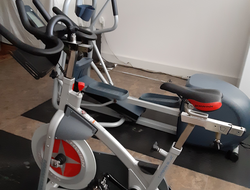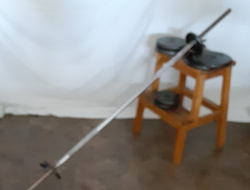Muscular endurance: A brief overview
Published: September 18, 2020
Improving your muscular endurance can make every day activities easier.
Muscles that lack muscular endurance tire easily and limit the amount of work those muscles can do and the pace at which you perform actions.
As your muscles become more tired the risk of injuring the muscles you are using, or other muscles, increases.
Imagine that you are packing boxes, perhaps you are moving house or that packing boxes is a part of your daily routine.
This requires that you are bending to place items in boxes and then bending and lifting to move heavy boxes.
There are many boxes and you need to get the job done today.
Your muscles my not fatigue at the same time, but at some point you find that you have to stop and take a rest because your back is sore or your arms are aching.
If your muscular endurance is poor then you may have to take frequent rests and not be able to finish the job.
If you push yourself to finish the job you will probably end up with very sore muscles or even a "pulled" or "strained" muscle. Your muscles may be sore for the next few days and you may find it difficult to do the work that you usually do.
However, if you have good muscular endurance you will be able to continue working for longer and your muscles will be able to recover more quickly so that the next day you can get on with what you usually do.
As well as making work and everyday activities easier, muscular endurance has other health benefits which include:
- Stronger bones, tendons, and ligaments
- Decreases risk of cardiovascular disease
- Improved body composition
- Decreased risk of injury
Muscular endurance refers to the ability of your muscle or a group of muscles to repeatedly contract over a long period of time without fatiguing.
Like cardiovascular endurance, muscle endurance relies more on aerobic metabolism. Many activities which improve cardiovascular endurance also improve muscular endurance.
However, muscular endurance relates to your muscular system whereas cardiovascular endurance relates to your circulatory and respiratory systems.
You have two types of skeletal muscle fibres: fast and slow twitch muscle fibres. Muscular endurance activities preferentially develop slow twitch muscle fibres.
Although there is a distinct difference between muscular endurance training programs and muscular strength training programs you will gain some muscular strength through your muscular endurance activities.
As with any fitness program to initiate specific gains, improving muscular endurance requires that you apply the "overload principle" to your muscular endurance activities.
That is, the work or load that is applied to your muscle(s) must be greater than the work load you would normally apply during your everyday activities.
Many everyday activities may be considered muscular endurance activities if they are performed with the "overload principle" in mind.
For instance, you may climb a couple of flights of stairs every day. To increase the intensity you could carry a back pack containing several pounds or kilograms of books.
There are various protocols for muscular endurance training, but in general the load applied is relatively low, and the number of repetitions is high as in climbing the stairs.
To gain muscular endurance you do not want your muscles to fatigue after only climbing a few stairs. You want to be able to climb the entire flight or several flights of stairs.
Muscular endurance activities include:
- sustained walking or running
- cycling
- resistance training
- calisthenics
- swimming
- circuit training
- aerobics and dance
- rope climbing
When training for muscular endurance the number of repetitions and the length of time the muscle or group of muscles contract are more important than the resistance (weight in the back pack) or intensity (speed) at which the physical activity is performed.
However, there is a minimum intensity, frequency and duration which will effect improvement. This is known as the training threshold.
In real terms, you need to make yourself work harder at your muscular endurance activity on an ongoing basis if you want to improve your muscular endurance.
As part of a healthy lifestyle, muscular endurance activities should be included with your other physical activities.
If weight loss is one of your health goals, muscular endurance training is an important part of your physical activity plan, along with an eating for health plan, to enable you to be physically active over longer durations of time to effect weight loss.
References
1.
Corbin, C.B. & Lindsey, R. (1994). Concepts of Physical Fitness. Dubuque, IA: Wm. C. Brown Communications Inc.
2.
CSEP (2013) Physical Activity Training for Health Canadian Society for Exercise Physiology


